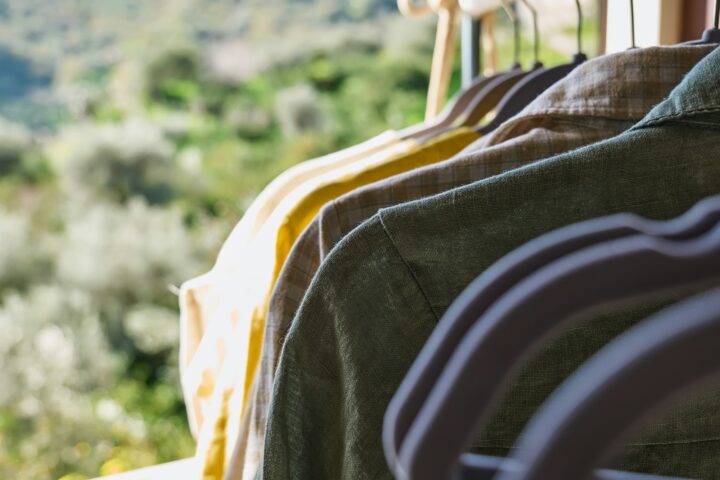The Covid-19 pandemic undoubtedly transformed our lives, making us reinvent ourselves, get out of the box and out of our comfort zone, as well as start to look at how we reset ourselves and overcome this health and economic crisis.
The fashion industry was no stranger, and began to transform and in fact one of the great changes that have happened in 2020, is that the consumer has become more responsible, has realized the damage we were doing to the planet and has begun to value the handmade clothing, footwear and accessories even handmade decorative objects, i.e., in an artisanal manner.
It should be noted that the fast fashion movement has been hard hit by the pandemic, and is that for some time to date grew by leaps and bounds, making the purchase addictive since it launched between 20 or 30 collections a year, at a low price using average materials, inspired by the catwalks of the major fashion weeks in the world, such as New York, Paris, Milan and London, to name a few examples, But due to the health crisis they were forced to suspend the fashion shows and stop producing so quickly, growing a slower fashion (Slow Fashion) where cycling, which consists in the use and reuse of garments and upcycling, which consists in making an improvement to a used garment, as when you sew a hood to a suit to protect the wearer from the cold, began to take on greater importance.
And is that the fashion industry, was clear since before the pandemic that it was the second most polluting in the world, so much so that the UN held a sustainable fashion alliance in Nairobi in March 2019 and in August of that same year, more than 32 companies including textiles, fashion retailers and fast fashion signed a Fashion Pact in the presence of French President Emmanuel Macron, having as main pillars: i) avoid climate change, ii) conserve natural resources and iii) protect rivers and oceans.
However, the Covid-19 accelerated this transformation in the industry and the concept of circular economy and sustainability in fashion that we have been hearing for a long time began to grow exponentially and in my opinion, it is no longer a trend but a reality, where the starting point is a more conscious consumer who asks where, how and who manufactured their clothing or accessories, where they ask if the labor rights of workers or workers who manufacture such products are respected, as well as they are interested in complying with environmental standards and regulations.
Thus, in the face of fast fashion, not only sustainable fashion has been re-powered but also artisanal fashion has begun to be valued, that is, we have returned to our roots and now as a major trend of 2021, we have that the “handmade”, begins to be valued by the consumer talking about a new luxury, that which in the beginning was born of artisanal brands that were bought by large conglomerates to then sell their products around the world, that is, in front of the massive emerges the handmade, the artisanal, giving birth to new trends such as the Craftcore and Cottagecore.
The Craftcore reinvents the concept of sustainable fashion and proposes that garments be designed from second-hand or home-made garments. One of the great changes brought about by the pandemic was remote work (homeoffice), which forced many to spend more time at home without being able to go out, since all activities were suspended except those of primary necessity, which in Peru were the sale in supermarkets, pharmacies and the operation of banks.
This made people realize that they could reuse textiles and create new designs based on natural dyes for example using techniques such as tie dye to dye garments with natural dyes under the Japanese Shibori method, appearing techniques such as patchwork that unite different pieces, quilting that combine layers of fabric (quilting), coming back into fashion knitting or crochet, among others.
Also, as we know, by fashion we should not only understand clothing, footwear or accessories but also includes decoration, giving birth to the cottagecore movement that seeks to be in contact with nature and many people working remotely were able to leave their urban homes and move to live in a country house or beach house continuing to provide their work remotely.
This movement revalues country life, reuses textiles or other materials in order to make a space in the house cozier, using in the decoration elements such as natural flowers, the color green and eco proposals, which transport us to a country life and in what refers to clothing using textures such as linen fabric or floral prints.
The elaboration of handmade and sustainable garments is undoubtedly the path that the fashion and textile industry is following, we will find a new way of making luxury, and we will call it sustainable luxury in which the details will be valued, as well as the work invested manually to produce it and will try to achieve traceability and transparency throughout the production chain of the product that will become more relevant and will gain more and more importance among consumers.
On the other hand, entrepreneurs will start to set up triple impact companies, that is, companies that not only have an economic purpose but also a social and environmental purpose, aligned with one or more of the 17 sustainable development goals that the UN declared in 2021 and that the challenge of meeting them for its 2030 Agenda.
We are facing a new alliance where sustainability and craftsmanship will become the main pillars of the fashion industry and where fashion law will undoubtedly take a leading role, enforcing compliance with labor, environmental and human rights standards, as well as implementing good corporate governance policies for its growth and development.










